water
Type of resources
Available actions
Topics
INSPIRE themes
Keywords
Contact for the resource
Provided by
Years
Formats
Representation types
Update frequencies
status
Scale
Resolution
-

EuroRegionalMap is a Pan-European topographic vector dataset at scale 1: 250000, that is seamless and harmonized across boundaries. It is produced in cooperation by the National Mapping Agencies of the participating countries using official national databases. Thematic layers: Administrative Boundaries, Hydrography, Miscellaneous, Settlements, Transport, Soils and Vegetation, Named Locations.
-

EuroRegionalMap is a Pan-European topographic vector dataset at scale 1: 250000, that is seamless and harmonized across boundaries. It is produced in cooperation by the National Mapping Agencies of the participating countries using official national databases. Thematic layers: Administrative Boundaries, Hydrography, Miscellaneous, Settlements, Transport, Soils and Vegetation, Named Locations.
-

EuroGlobalMap is a topographic dataset that covers the EU (except Bulgaria), Andorra, Croatia, Faroe Islands, Greenland, Iceland, Liechtenstein, Moldova, Monaco, Norway, San Marino, Switzerland, Ukraine and Vatican at the scale 1:1 Million. It is produced in cooperation by the National Mapping Agencies of Europe, using official national databases. Thematic layers: administrative boundaries, hydrography, transportation, settlements, elevation points, named location. This metadata only refers to the coastline from EuroGlobalMap.
-

"Coastal water" are surface water on the landward side of a line, every point of which is at a distance of one nautical mile on the seaward side from the nearest point of the baseline from which the breadth of territorial waters is measured, extending where appropriate up to the outer limit of transitional waters.
-
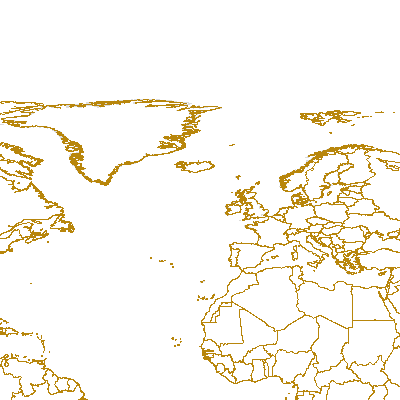
EuroGlobalMap is a topographic dataset that covers the EU (except Bulgaria), Andorra, Croatia, Faroe Islands, Greenland, Iceland, Liechtenstein, Moldova, Monaco, Norway, San Marino, Switzerland, Ukraine and Vatican at the scale 1:1 Million. It is produced in cooperation by the National Mapping Agencies of Europe, using official national databases. Thematic layers: administrative boundaries, hydrography, transportation, settlements, elevation points, named location.
-

"Transitional waters" are bodies of surface water in the vicinity of river mouths which are partly saline in character as a result of their proximity to coastal waters but which are substantially influenced by freshwater flows.
-
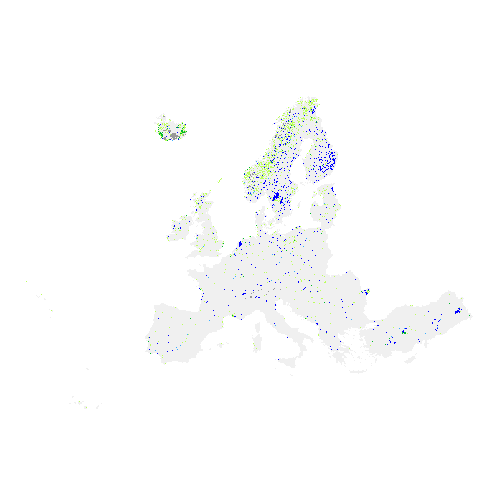
The Copernicus High Resolution Water and Wetness (WAW) 2015 layer is a thematic product showing the occurrence of water and wet surfaces over the period from 2009 to 2015 for the EEA38 area and the United Kingdom . This metadata corresponds to the aggregation of the 20m classified product into a 100m raster. The production of the High Resolution Water and Wetness layers was coordinated by the European Environment Agency (EEA) in the frame of the EU Copernicus programme. Two WAW products are available: - The main Water and Wetness (WAW) product, with defined classes of (1) permanent water, (2) temporary water, (3) permanent wetness and (4) temporary wetness. - The additional expert product: Water and Wetness Probability Index (WWPI). The products show the occurrence of water and indicate the degree of wetness in a physical sense, assessed independently of the actual vegetation cover and are thus not limited to a specific land cover class and their relative frequencies. Data is provided as a mosaic of the full area, and as tiles with a side length of 1000 km x 1000 km. In 2020, due to methodological improvements, the temporary wet class has been reprocessed during the update for the 2018 reference year.
-
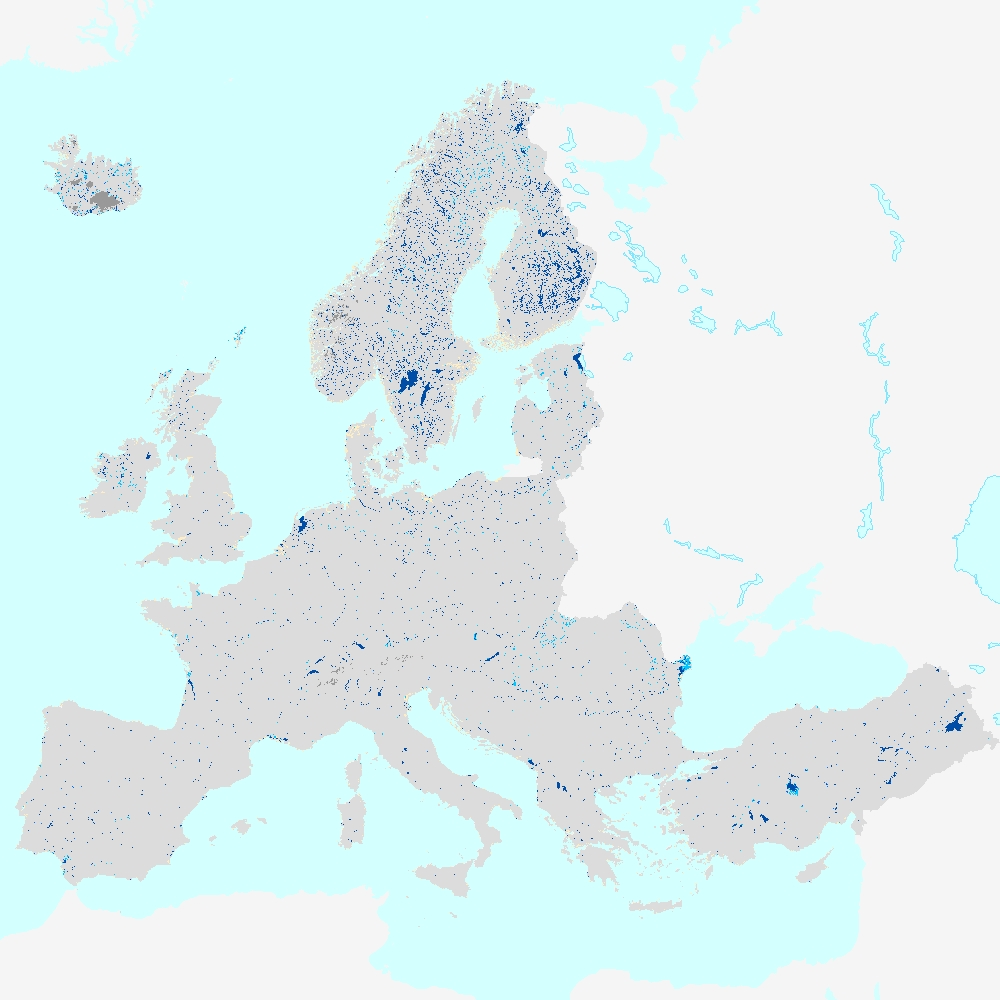
The Copernicus High Resolution Water and Wetness (WAW) 2018 layer is a thematic product showing the occurrence of water and wet surfaces over the period from 2012 to 2018 for the EEA38 area and the United Kingdom. Two products are available: - The main Water and Wetness (WAW) product, with defined classes of (1) permanent water, (2) temporary water, (3) permanent wetness and (4) temporary wetness. - The additional expert product: Water and Wetness Probability Index (WWPI). The products show the occurrence of water and indicate the degree of wetness in a physical sense, assessed independently of the actual vegetation cover and are thus not limited to a specific land cover class and their relative frequencies. The production of the High Resolution Water and Wetness layers was coordinated by the European Environment Agency (EEA) in the frame of the EU Copernicus programme. The dataset is provided as 10 meter rasters in 100 x 100 km tiles grouped according to the EEA38 countries and the United Kingdom (fully conformant with the EEA reference grid).
-
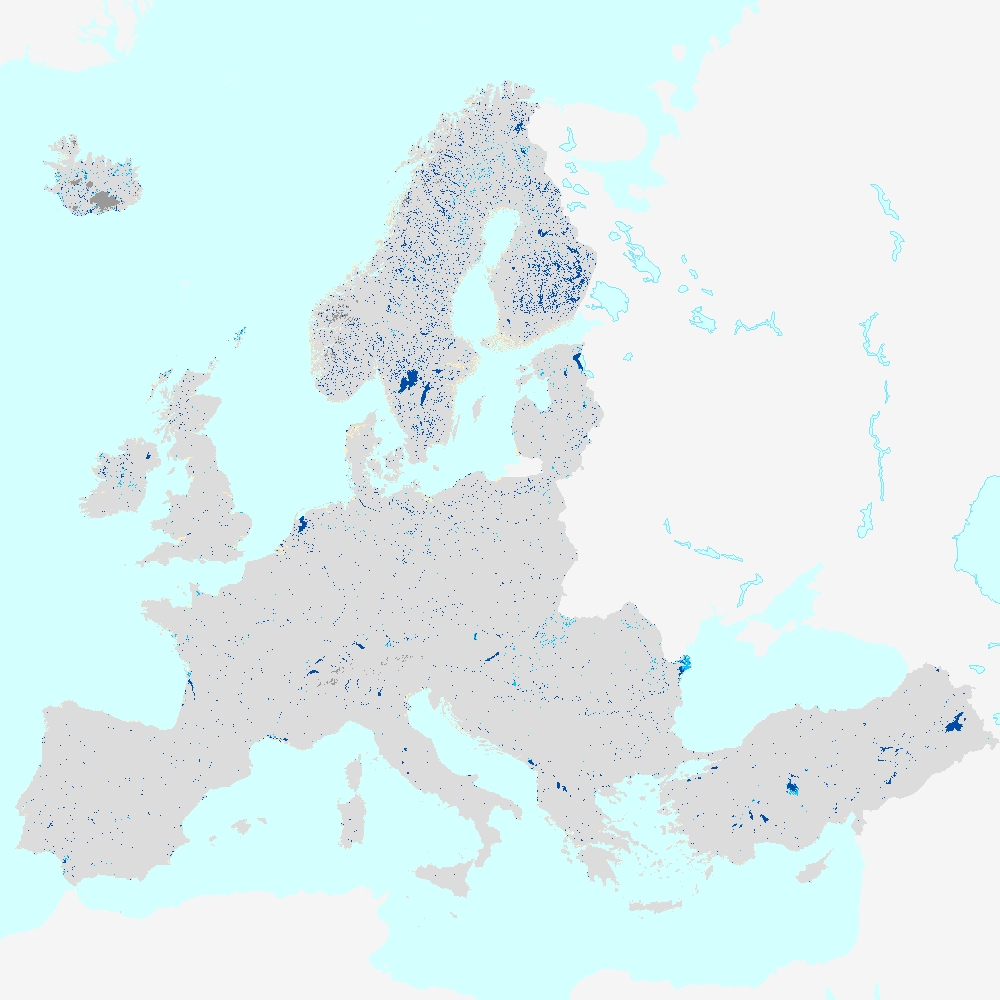
The Copernicus High Resolution Layer Water and Wetness (WAW) 2018 is a thematic product showing the occurrence of water and wet surfaces over the period from 2012 to 2018 for the EEA38 area and the United Kingdom. This metadata refers to the 100 meter aggregate raster, provided as a full EEA38 and United Kingdom mosaic (fully conformant to with the EEA reference grid). The production of the High Resolution Water and Wetness layers was coordinated by the European Environment Agency (EEA) in the frame of the EU Copernicus programme Two Water and Wetness products are available: - The main Water and Wetness (WAW) product, with defined classes of (1) permanent water, (2) temporary water, (3) permanent wetness and (4) temporary wetness. - The additional expert product: Water and Wetness Probability Index (WWPI). The products show the occurrence of water and indicate the degree of wetness in a physical sense, assessed independently of the actual vegetation cover and are thus not limited to a specific land cover class and their relative frequencies.
-
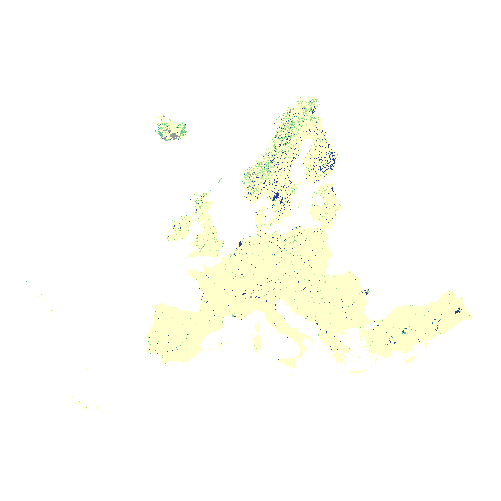
The combined Water and Wetness product is a thematic product showing the occurrence of water and wet surfaces over the period from 2009 to 2015. Two products are available: The main Water and Wetness (WAW) product with defined classes of (1) permanent water, (2) temporary water, (3) permanent wetness and (4) temporary wetness; and the additional expert product: Water & Wetness Probability Index (WWPI). These products show the occurrence of water and indicate the degree of wetness in a physical sense, assessed independently of the actual vegetation cover and are thus not limited to a specific land cover class and their relative frequencies. The production of the high resolution water and wetness layers was coordinated by the European Environment Agency (EEA) in the frame of the EU Copernicus programme.
 RUC Geo-Data catalogue
RUC Geo-Data catalogue